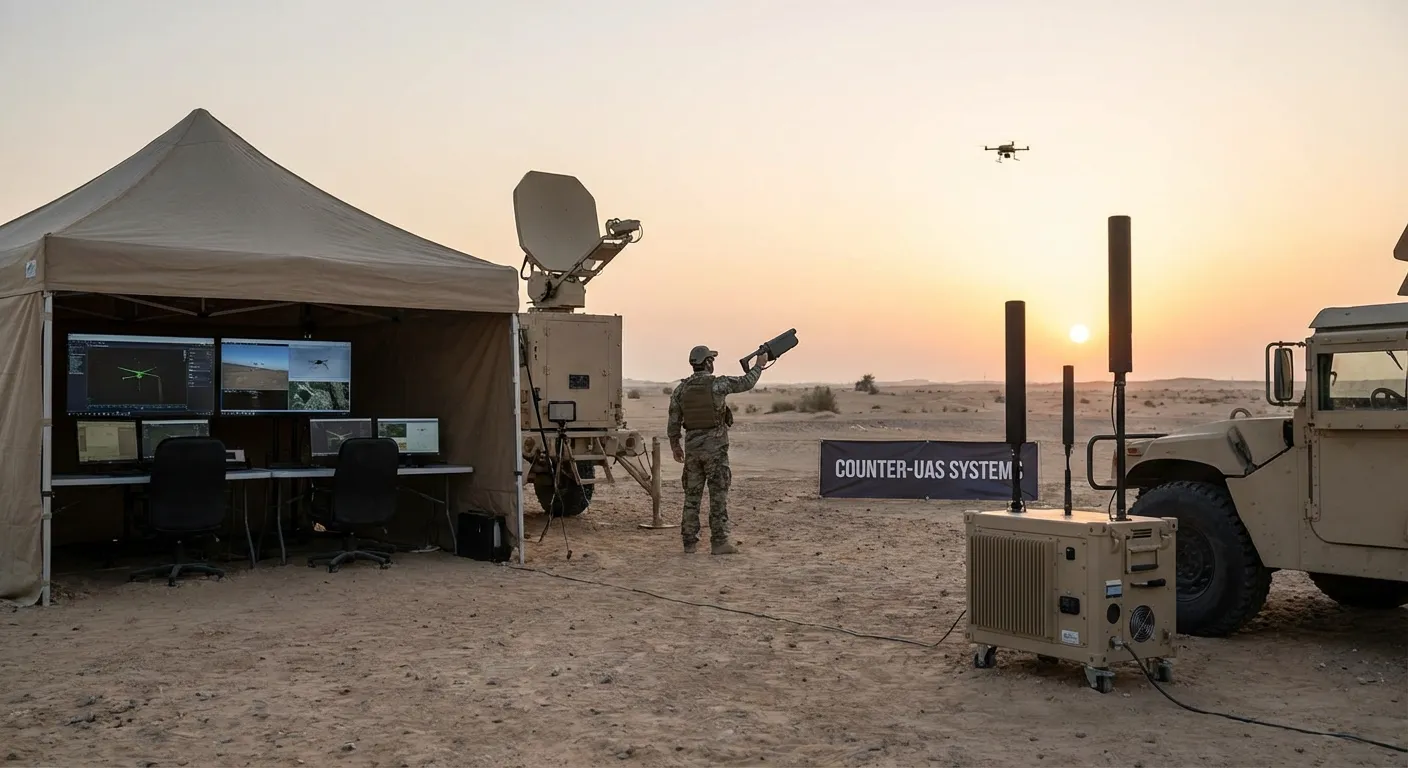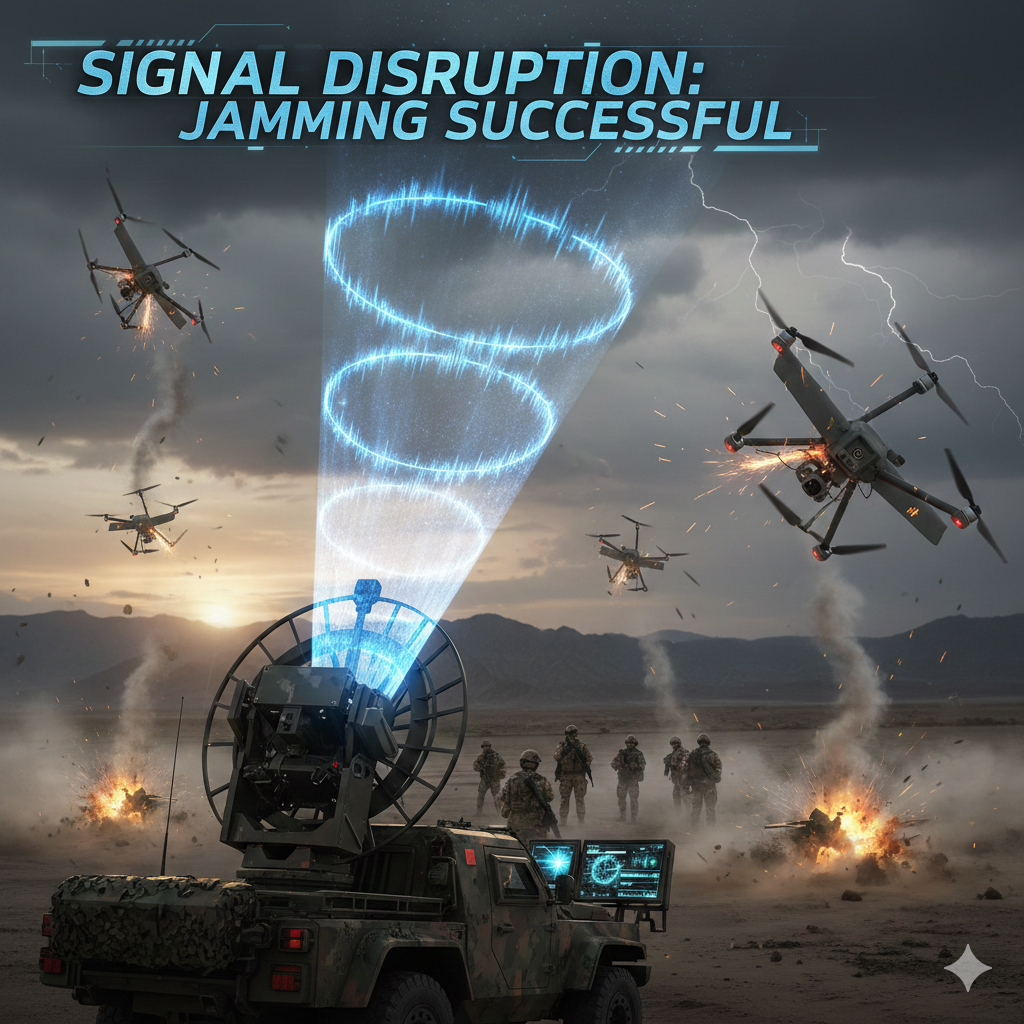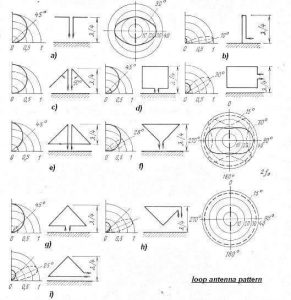anti drone
drone
security
technology
UAV
anti UAV systems, anti-drone security, anti-drone system, anti-drone technology 2025, best counter drone technology, commercial drone protection, drone countermeasures, drone defense solutions, drone detection radar, drone interception technology, drone jamming devices, drone threat mitigation, military drone defense, top anti-drone systems, UAV defense systems
9M2PJU
0 Comments
Protecting the Sky: The World’s Leading Anti-Drone Systems (C-UAS)
Drones have become one of the most disruptive technologies of the 21st century. They are revolutionary tools in filmmaking, agriculture, logistics, surveying, policing, inspections, mapping, and disaster relief. Yet, the same qualities that make drones powerful — affordability, ease of operation, long-range capability, and payload flexibility — also make them dangerous when exploited for malicious or irresponsible purposes.
The modern world faces an increasing number of drone-related incidents: airport shutdowns, contraband deliveries to prisons, espionage over military bases, unauthorized surveillance of VIP residences, smuggling across borders, and, in conflict regions, weaponized attacks. The proliferation of drones is no longer a trend; it is a permanent technological reality.
To counter these risks, the global security sector has evolved rapidly, giving rise to a new field: Counter-Uncrewed Aircraft Systems (C-UAS), commonly referred to as anti-drone systems.
This guide provides the most comprehensive, deeply detailed, and future-aligned breakdown of anti-drone technology available in 2025. It covers the full architecture of C-UAS solutions, the technologies behind them, the challenges of modern drone threats, and the world’s strongest systems used by airports, militaries, governments, critical infrastructure operators, and large private organizations.
This is the definitive long-form article that security professionals, researchers, and decision-makers require when evaluating modern anti-drone capabilities.
1. Why Anti-Drone Security Has Become Essential in 2025
A decade ago, drones were primarily hobby gadgets with limited battery life and range. Today, they are intelligent aerial robots with:
- 30–50 minute flight times
- Multi-kilometer control ranges
- Obstacle avoidance
- Encrypted communication links
- Autonomous return-to-home capabilities
- Payload capacities capable of carrying cameras, electronics, jammers, or explosives
- Flight-planning apps that allow fully autonomous missions, including GPS-denied routes
Furthermore, drones can be modified to become:
- RF-silent (no control link)
- Fully autonomous pre-programmed systems
- Low acoustic signature platforms
- Swarm-capable units that coordinate with each other
This evolution has outpaced many traditional security models.
Security perimeters, guards, CCTV networks, fences, gates, and even air-defense systems are not designed to detect, track, or neutralize small, slow, low-flying drones.
Modern threats include:
- Unauthorized surveillance drones flying near government buildings
- Drones carrying phones, drugs, or weapons into prisons
- Commercial drones performing reconnaissance over critical infrastructure
- Drones used to map security patrols
- Drones dropping payloads across borders
- Weaponized drones in conflict zones
- Drone swarms designed to overwhelm defenders
- DIY drones with no radio link — making RF detection nearly impossible
These scenarios show why anti-drone systems are not optional. They are a critical, permanent part of modern security infrastructure.
2. What Defines a Modern Anti-Drone System?
A complete C-UAS solution contains four major layers:
- Detection
- Identification
- Tracking
- Mitigation or Neutralization
Each layer requires advanced sensors, software, and integration. The quality of a C-UAS system is not defined by a single component but by how well the entire system operates as a unified, intelligent network.
Below is the deep technical breakdown required for a serious security evaluation.
3. Detection Technologies: The Foundation of Every Anti-Drone System
Detecting drones is, without question, the most challenging part of C-UAS operations.
Small drones reflect very little radar energy. Many use encrypted, frequency-hopping communication protocols. Others operate autonomously with no RF signature. Their size and speed make them easily confused with birds or environmental clutter.
Therefore, modern C-UAS systems rely on multi-sensor fusion, combining several detection methods simultaneously.
3.1 Radar (3D, small-target, low-altitude radars)
Specialized radars built for C-UAS differ from traditional air-defense radars. They operate with:
- Higher sensitivity to small radar cross-sections
- Short to medium range (typically 1–10 km)
- Low-altitude scanning from ground level
Radar provides:
- Range
- Elevation
- Heading
- Speed tracking
- Early warning
It is essential for detecting autonomous drones that emit no radio signals.
3.2 RF (Radio Frequency) Detection
RF sensors detect:
- Drone control links
- Telemetry signals
- Wi-Fi signals
- FPV video transmissions
- Remote pilot locations (direction finding)
RF detection is extremely effective against consumer drones but less useful against pre-programmed autonomous routes.
However, many modern C-UAS systems use RF fingerprinting — identifying drone models based on their unique signal “signature.”
3.3 Electro-Optical / Infrared (EO/IR) Cameras
EO/IR systems provide:
- Visual confirmation
- Thermal imaging for night operations
- Zoom and tracking capabilities
They are essential for identification and operator verification.
3.4 Acoustic Sensors
Although less common in modern systems, acoustic arrays can identify drone sound signatures, especially in urban areas. They are often used to complement other sensors.
3.5 AI-Driven Sensor Fusion
The true power of a C-UAS platform is not one sensor — it is how the system combines all sensors at once.
AI performs:
- Target classification
- Threat level scoring
- Pattern recognition
- Behavior prediction
- Bird vs drone differentiation
This dramatically reduces false alarms and increases operational reliability.
4. Identification and Tracking
Once a drone is detected, the system must identify:
- Drone type
- Drone model
- Possible payload
- Operator location
- Flight intent
- Risk level
Modern systems may use:
- Machine learning video analytics
- RF metadata decoding
- Flight path prediction algorithms
- Triggered auto-tracking cameras
- Fusion of radar and EO to classify targets
Tracking provides continuous location updates, allowing operators to determine whether a drone is approaching restricted airspace or simply passing by.
5. Mitigation: The Most Regulated and Complex Part of C-UAS
Mitigation means stopping the drone. It is also the most legally sensitive part of C-UAS because it involves electromagnetic interference, physical damage, or destruction.
Mitigation methods include:
5.1 RF Jamming
Disrupts drone communication links, forcing drones to:
- Hover
- Land
- Return to home
Effective against consumer drones. Regulated or restricted in many countries.
5.2 GNSS/GPS Jamming
Breaks the drone’s satellite navigation system.
Some drones enter fail-safe mode; others drift unpredictably. Not suitable in dense urban areas unless regulations allow.
5.3 Protocol Spoofing or Takeover
The system “mimics” the drone’s control signal and takes over. This is safer than brute-force jamming.
Available only in advanced systems with specialized RF capabilities.
5.4 High-Energy Lasers
Lasers physically destroy drones by burning through structural components or sensors. Precision is extremely high and collateral damage is low.
Used primarily by military systems.
5.5 High-Power Microwave (HPM) Weapons
Emit electromagnetic pulses that disable drone electronics. Effective against swarms but requires strict control to avoid affecting nearby equipment.
5.6 Kinetic Interceptors
This includes:
- Interceptor drones
- Missiles
- Nets launched by air or ground
- Projectile-based systems
Used where jamming is not permitted.
5.7 Multi-Layer Automated Response
The most advanced C-UAS systems assign risk levels and trigger automated responses such as:
- Auto-slew cameras
- Auto-tracking radar
- Operator alerts
- Automated soft-kill
- Automated hard-kill (military-only)
This automation is critical when facing multiple drones or swarms.
6. The World’s Leading Anti-Drone Systems in 2025
The global C-UAS market is crowded, but only a handful of systems dominate real-world deployments. Below is the definitive breakdown of the world’s strongest anti-drone systems.
Each system excels in different environments — commercial, military, tactical, mobile, or integrated defense.
6.1 Dedrone — The Benchmark for Detection, AI, and Enterprise Airspace Security
Dedrone has become the gold standard for enterprise, commercial, and infrastructure airspace security. While Dedrone does not specialize in heavy weaponry, it offers the most advanced detection-centric solution available.
Why Dedrone Leads the Market
- World-class AI analytics
- Multi-sensor fusion
- Scalable for large facilities
- Cloud, on-premise, or hybrid deployment
- Geolocation of both drone and pilot
- Seamless integration with jammers and other effectors
Ideal Use Cases
- Airports
- Government buildings
- Prisons
- Stadiums
- Oil and gas facilities
- Data centers
- VIP residential protection
Dedrone is the global leader in smart airspace intelligence.
6.2 DroneShield — The Tactical, Portable, and Law-Enforcement Champion
DroneShield is well-known for rugged, operator-friendly, and fast-deployment systems. It excels in field missions and police operations.
Key Features
- Handheld DroneGun jammers
- Wearable RF detectors
- Fixed or mobile detection units
- AI-enhanced direction finding
- Trusted by military and police agencies
Ideal Use Cases
- Police and law enforcement
- Border patrol
- Stadiums and events
- Convoy protection
- Mobile security units
DroneShield provides unmatched portability and operational flexibility.
6.3 Rafael Drone Dome — The Military-Grade C-UAS with Laser Hard-Kill
Drone Dome stands out for offering a laser-based neutralization system. It is one of the most advanced hard-kill C-UAS platforms.
Why Drone Dome Is Considered Elite
- Long-range 3D radar
- Passive and active RF detection
- EO/IR tracking
- Jamming capability
- High-energy laser capable of precision destruction
Ideal Use Cases
- Military bases
- National borders
- Conflict zones
- Government installations
- Strategic facilities
Drone Dome is designed for environments where hostile drones are expected.
6.4 Raytheon / RTX — Directed Energy and Interceptor Expertise
Raytheon leads in cutting-edge directed-energy weapons and interceptor drone systems.
Key Capabilities
- High-energy laser weapons
- Coyote interceptor drones
- Advanced radars and EW platforms
- Swarm-defense algorithms
Ideal Use Cases
- Military air defense
- Forward operating bases
- Naval vessels
- High-risk conflict environments
Raytheon systems are built to counter the most advanced drone threats in the world.
6.5 Lockheed Martin & SRC — Integrated National Defense C-UAS Networks
These systems are used in large, distributed military defense networks.
Highlights
- Multi-sensor fusion
- Laser systems in development
- Open-architecture integration
- Large-area coverage
- Full compatibility with conventional air-defense systems
Ideal Use Cases
- National defence grids
- Border protection
- Long-range surveillance networks
6.6 Liteye & Blighter — Rugged, Mobile, and Reliable C-UAS
Liteye frequently pairs with Blighter radars to create durable mobile C-UAS setups.
Ideal Use Cases
- Vehicle-mounted C-UAS
- Temporary field bases
- Harsh environments
- Remote infrastructure
These systems excel in mobility and durability.
7. How to Choose the Right Anti-Drone System
Selecting the ideal C-UAS depends on your operational needs.
Key questions to ask:
- What is the threat level?
- What is the environment (urban, rural, high-altitude, coastal)?
- What is the legal allowance for jamming or hard-kill?
- Do you need a fixed system or mobile unit?
- What is the budget?
- Do you need automation or manual control?
- Is integration with existing security systems required?
A serious procurement evaluation typically includes:
- Site survey
- Threat modeling
- RF spectrum analysis
- Radar feasibility
- Deployment planning
- Integration workflow
- Training and certification
8. Limitations of Modern C-UAS Systems
Even the best systems face challenges:
- Completely autonomous drones with no RF links
- Drone swarms
- Highly miniaturized drones
- Adversarial AI flight techniques
- Radar shadow zones in dense urban areas
- Legal restrictions on jamming
Therefore, the best approach is a layered system combining radar, RF, EO/IR, and AI.
9. The Future of Anti-Drone Systems (2025–2030)
Expect major developments in:
- Drone swarm countermeasures
- AI-based autonomous defense
- More powerful and compact lasers
- Drone-on-drone interceptors
- RF stealth detection
- Long-range passive RF tracking
- Satellite-assisted detection for border security
Anti-drone systems will evolve as fast as drones themselves, creating a continual arms race between attackers and defenders.
10. Summary: The Best Anti-Drone Systems by Category
Best for Enterprise & Commercial Use:
Dedrone
Best for Police, Events, Tactical Mobility:
DroneShield
Best Military Hard-Kill Solution:
Rafael Drone Dome
Best for Directed-Energy Research & Swarm Defense:
Raytheon / RTX
Best for National Defense Integration:
Lockheed Martin / SRC
Best for Rugged Mobile Deployments:
Liteye / Blighter







Post Comment